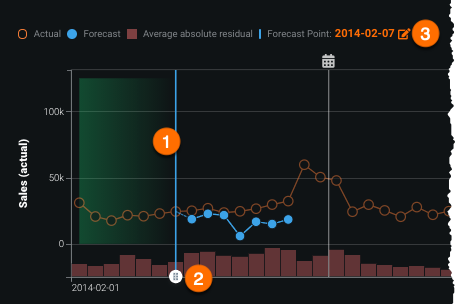The field of meteorology has witnessed a significant transformation over the past few decades, thanks to advancements in technology. Among these, machine learning (ML) has emerged as a powerful tool, revolutionizing weather prediction methods. Traditionally, weather forecasting relied heavily on statistical models and physical simulations based on meteorological principles. While these methods have their merits, they often fall short in terms of accuracy and efficiency, particularly in the face of rapidly changing weather patterns. The advent of machine learning has not only enhanced the precision of weather forecasts but also improved the speed at which they can be generated. This article explores the role of machine learning in weather prediction, its advantages, applications, and prospects.
Understanding Machine Learning

Machine learning is a subset of artificial intelligence that focuses on the development of algorithms and statistical models that enable computers to perform specific tasks without explicit instructions. Instead, these systems learn from data, identify patterns, and make decisions based on the information they gather. In the context of weather prediction, machine learning algorithms analyze vast amounts of historical and real-time weather data to identify patterns that can inform future predictions. This data-driven approach has proven to be particularly effective in complex systems like the atmosphere, where traditional models may struggle to account for all variables.
The Shift from Traditional Methods
Historically, weather forecasting relied on deterministic models based on the Navier-Stokes equations, which describe the motion of fluid substances. These models simulate the physical processes governing the atmosphere, but they require immense computational resources and often rely on simplified assumptions. Additionally, these traditional methods are limited by the quality and quantity of input data, which can lead to inaccuracies in forecasting.
Machine learning, on the other hand, leverages the power of data. With the exponential increase in data availability, thanks to satellite imagery, weather stations, and other sensors, machine learning algorithms can analyze vast datasets much faster and more efficiently than traditional models. This transition marks a significant shift in how meteorologists approach weather prediction, as they increasingly incorporate machine-learning techniques into their forecasting processes.
Applications of Machine Learning in Weather Prediction
Data Assimilation and Quality Control
One of the primary applications of machine learning in weather forecasting is data assimilation. Machine learning algorithms can process and assimilate data from various sources, including satellite imagery, radar data, and weather stations, to produce more accurate initial conditions for models. By employing techniques like anomaly detection, these algorithms can identify and correct errors in incoming data, ensuring that forecasts are based on high-quality information.
Numerical Weather Prediction (NWP)
Machine learning is increasingly being integrated into numerical weather prediction models. These models simulate the atmosphere using physical laws, but machine learning can enhance their performance by optimizing parameters or even replacing certain components. For instance, neural networks can be used to predict the outputs of complex physical models based on input data, significantly speeding up the forecasting process without compromising accuracy.
Short-Term Forecasting
Machine learning algorithms excel at short-term weather forecasting, particularly for phenomena that change rapidly, such as thunderstorms or severe weather events. By analyzing real-time data and historical patterns, machine learning models can provide timely alerts and forecasts, improving public safety and response times during extreme weather events.
Climate Modeling
Beyond daily weather forecasting, machine learning is also being used in climate modelling. These models aim to predict long-term climate trends based on historical data and various climate variables. Machine learning techniques can help identify relationships between different climatic factors, enabling more accurate predictions of future climate scenarios.
Predicting Extreme Weather Events
Extreme weather events, such as hurricanes, tornadoes, and floods, pose significant risks to communities worldwide. Machine learning models can analyze historical data to identify the conditions that precede these events, improving the ability to predict their occurrence and intensity. For example, researchers have developed models that predict hurricane tracks more accurately by incorporating machine learning algorithms trained on past hurricane data.
Personalized Weather Forecasting
As technology continues to advance, machine learning has enabled the development of personalized weather forecasting applications. These applications analyze user preferences and location-specific data to provide tailored forecasts. By learning from user interactions and feedback, these applications can improve their accuracy and relevance over time, enhancing the overall user experience.
Advantages of Machine Learning in Weather Prediction
Enhanced Accuracy
One of the most significant advantages of using machine learning in weather forecasting is the potential for improved accuracy. Machine learning models can identify complex relationships within vast datasets that traditional methods might overlook. This capability enables more precise predictions, particularly in dynamic weather systems where conditions can change rapidly.
Faster Processing Times
Machine learning algorithms can analyze large datasets much faster than traditional models. This speed is crucial in weather forecasting, where timely information is essential for effective decision-making. By reducing the time required to generate forecasts, machine learning can enhance the overall responsiveness of meteorological services.
Automation of Processes
The integration of machine learning into weather forecasting automates many processes that were previously manual. This automation reduces the risk of human error and allows meteorologists to focus on interpreting results and making informed decisions rather than spending excessive time on data analysis.
Scalability
Machine learning algorithms can easily scale to accommodate increasing amounts of data. As more weather sensors and satellites are deployed, machine learning models can adapt to handle the influx of information without significant changes to their underlying architecture.
Predictive Capabilities
The predictive capabilities of machine learning extend beyond immediate weather forecasts. These models can provide insights into long-term trends and patterns, allowing for better preparedness and response strategies for future climate scenarios.
Challenges and Limitations
Despite its many advantages, the application of machine learning in weather prediction also faces several challenges. One significant issue is the need for high-quality, diverse datasets to train machine learning models effectively. In many regions, especially in developing countries, the lack of reliable weather data can hinder the performance of machine learning algorithms.
Additionally, the “black box” nature of some machine learning models poses challenges for interpretability. Meteorologists must understand how these models arrive at their predictions to trust and utilize them effectively. Efforts are underway to develop explainable AI techniques that can provide insights into the decision-making processes of machine learning models, enhancing their transparency and usability in weather forecasting.
Future Prospects of Machine Learning in Weather Prediction
The future of machine learning in weather prediction appears promising. As advancements in technology continue to evolve, the capabilities of machine learning algorithms will likely expand, leading to even more accurate and efficient forecasting methods. The integration of machine learning with other technologies, such as big data analytics and the Internet of Things (IoT), will further enhance the potential for real-time weather monitoring and prediction.
Research in ensemble learning, where multiple machine learning models are combined to improve overall accuracy, is also gaining traction. This approach allows meteorologists to leverage the strengths of various models, enhancing predictive performance and reducing the impact of individual model weaknesses.
Moreover, the growing emphasis on climate change and its impact on weather patterns will drive further research and development in this field. Machine learning can play a crucial role in understanding and predicting the effects of climate change on weather systems, providing valuable insights for policymakers and communities.
Machine learning has emerged as a transformative force in weather prediction, enhancing the accuracy, speed, and efficiency of forecasting methods. By harnessing the power of data, machine learning algorithms are reshaping the landscape of meteorology, providing more reliable predictions and improving our ability to respond to extreme weather events. While challenges remain, the ongoing research and development in this field hold great promise for the future of weather forecasting. As technology continues to advance, we can expect machine learning to play an increasingly vital role in understanding and predicting our planet’s weather patterns, ultimately leading to safer and more resilient communities.





